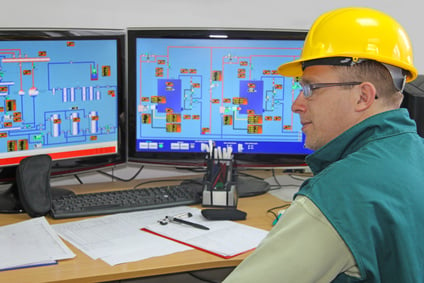This guest post is authored by Michel Ho, a consultant in the operational consulting group of MAVERICK Technologies.
Are you considering implementing high-performance graphics (HPG) or abnormal situation management graphics? If so then you are part of a fast growing list of manufacturers trying to gain a competitive edge. Three types of companies and their road to achieve HPG are described here. The first company is a firm believer in the concepts and is willing to invest  money and resources to attain their goal. The second company, for one reason or another, settles with partial implementation. The final company attempts but fails to extract key benefits of HPG.
money and resources to attain their goal. The second company, for one reason or another, settles with partial implementation. The final company attempts but fails to extract key benefits of HPG.
The ideal road to HPG starts with the creation of philosophy, standards, and guideline documents. Those documents explain what defines HPG and how to achieve it. Possible topics contained are principles for HPG design, library objects, layout, backgrounds, colors, lines, sizes, navigation, text, alarm indication, tables, static equipment, dynamic equipment, alignment, and many more. It is likely that if custom library objects are required, they are created while defining the standards and guidelines.
Once those standards and guidelines are created, an interactive workshop is held with senior operators and engineers to conceptually identify quantities and levels of graphics along with the optimum navigational layout. A knowledgeable third party facilitator is highly recommended for leading the session and challenging all personnel to think outside the box. Subsequently, new HPGs are created. along with library objects if not already completed.
In situations in which a company has limited commitment due to the lack of time, resources, capital, or buy-in from key stakeholders, the standards development can be skipped, and the process starts with the workshop. Although the graphics are created using existing library objects in this case, without the benefit of site-specific feedback and optimization, operators can still benefit greatly with a new graphic hierarchy, layout, and navigation. Operators will spend more of their time looking at a lesser amount of graphics, spending about 80 percent of their time on a handful of Level 2 graphics. Most often they will accept and appreciate the new graphics despite early reluctance.
It is not recommended to skip both the standards and workshop and instead simply convert the existing graphics to HPG. In fact, simply changing color schemes does not even qualify for true HPG. While less expensive on a per graphic basis, the company will miss all key benefits in graphics hierarchy, layout, and navigation. Often, more graphics are converted than needed. It is also not recommended to self perform the workshop as it has been observed that some have end up with a larger number of graphics than prior to HPG implementation. In one instance, the manufacturer ended with almost 400 graphics when roughly 100 should have been sufficient.
The ideal scenario, which is the most beneficial and most cost effective solution on the long run, is to fully implement HPG by starting with standards and developing an optimized layout. All key benefits would be achieved and each HPG feature would enhance each other. However if one must save resources then the standards can be skipped. The workshop on the other hand should not be neglected if the goal is truly HPG. By not experiencing the workshop you are discarding important gains that are the difference maker in how the operator can effectively control the process. Converting existing graphics with different colors and equipment location is unquestionably not HPG. It is a failed attempt with self-deception of possessing HPG.
About the Author
Michel Ho graduated from the University of Houston with a bachelor's degree in electrical engineering. He spent several years implementing DCS migrations with high performance graphics and is now a consultant in the operational consulting group of MAVERICK Technologies. His duties are focused on performing DCS migration FEL studies for various clients in the process industries. Often these FEL studies and subsequent DCS migrations include implementation of high performance graphics on the new DCS.



